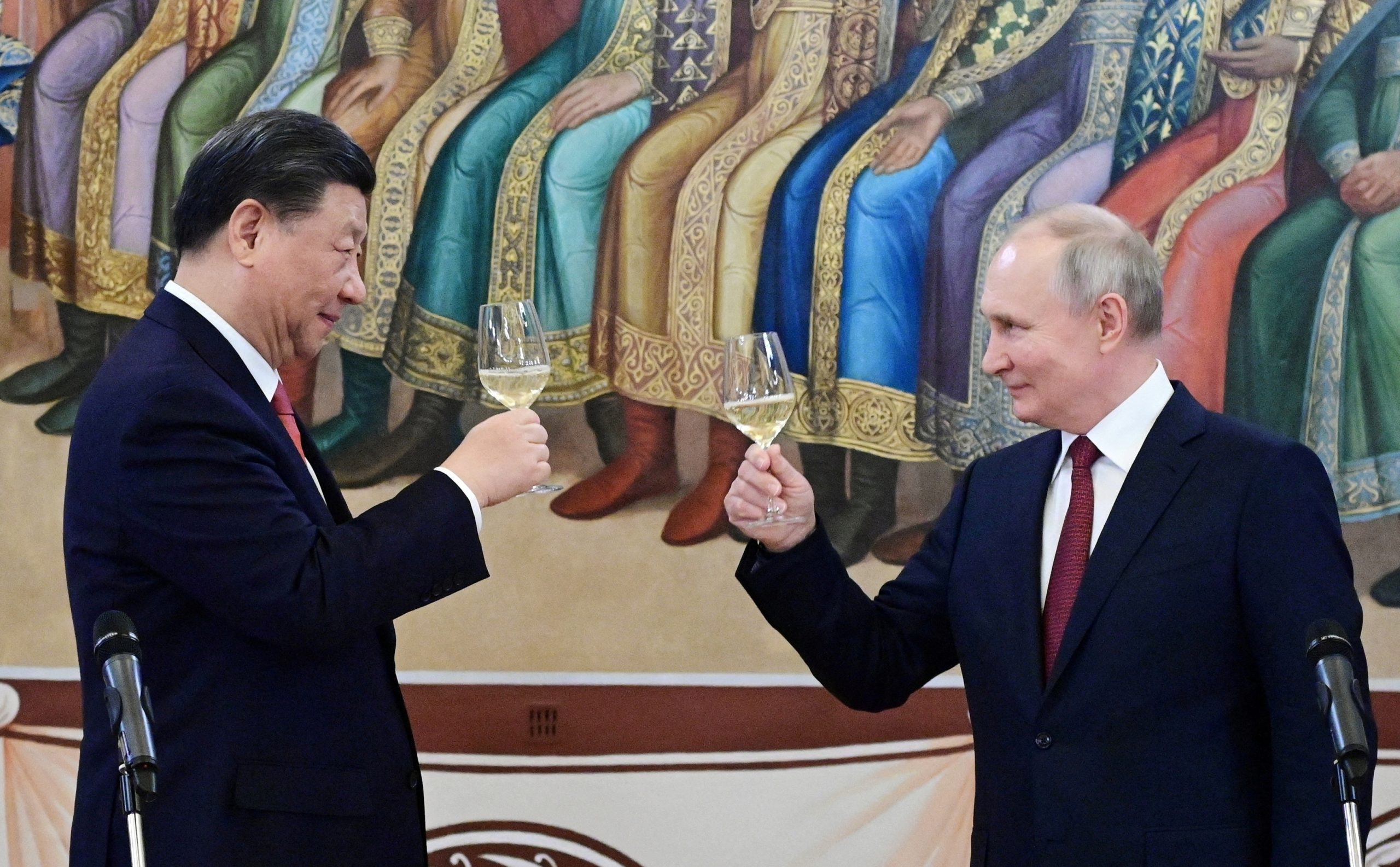Chels Michta
 The US worries that China is about to supply Russia with weapons and ammunition. But the Beijing-Moscow alliance is already a danger.
The US worries that China is about to supply Russia with weapons and ammunition. But the Beijing-Moscow alliance is already a danger.There is much dispute about what China has sent to aid Russia’s war of aggression in Ukraine, and what it might send in the future. While the administration has warned against such deliveries, some already seem to be underway. Whatever China’s defense, assault rifles aren’t really hunting weapons and body armor isn’t needed to protect against wildlife.
Regardless, the two countries are already locked into an alliance. Treating them as separate threats is naïve. The Sino-Russian alliance is creating a potential two-front crisis for the United States which both powers are already exploiting. The US and its democratic allies must now acknowledge and confront this threat.
Of course, things could get worse, and quickly. It’s true that the two are already major trading partners (trade rose by 34% last year), that Russia has for years provided military technology to China, and is now offering much greater access to its top technology institutes, and that Putin and Xi have declared a “no limits” partnership.
And yet there have been clear limits, including the provision of mass-produced heavy arms and ammunition to Russia, especially for artillery units suffering a shell famine.
If China was to take such a decision, it would transform the war into a larger conflict directly pitting Beijing against the US, while forcing our European allies — many of whom are intricately tied to the Chinese manufacturing sector and its markets — to choose sides, with potentially dramatic consequences for their economies battered by COVID and the loss of cheap energy from Russia.
Likewise, other countries, especially India, would find it difficult to maintain their position of formal neutrality, potentially leading to further polarization in Asia. Most importantly, China’s decision to go all-in with its military support for Russia would amount to a sign that it is ready to cross the threshold and engage in a direct confrontation with the US in both Asia and Europe. From there, the distance to a potential great power conflict between the two most powerful nations on Earth would shrink exponentially.
Which begs the question: why would China even hint at such an escalation, knowing full well what the US response would be? One answer is that it’s increasingly confident that it can best the US in an all-out confrontation, including a kinetic conflict. Supplying Russia with weapons and ammunition provides other advantages, especially as a means to drain US weapons and munitions stocks, thereby improving China’s relative military balance.
Russia’s growing closeness to China retreads the pattern of a declining power seeking to bolster its standing in the international system by leveraging another great power that shares its overall systemic outlook and goals (rather more benignly, the UK-US relationship contains some elements of this.) As a declining Eurasian empire, Russia is intent on revising the post-Cold War settlement by, first, regathering the Eastern Slavic core of the former Soviet Union — recalling Putin’s statements that there is no such thing as a Ukrainian nation — and then re-establishing a sphere of influence in Europe, the Caucasus, and Central Asia. For this, he needs China’s backing and, increasingly, consent, as it increases its economic investment and influence in Central Asia.
China’s motives are less complicated. In many ways, it has taken the familiar road of an upstart empire basking in the undeniable achievement of its modernization, and seething with a desire for vengeance for the real and imagined indignities the West has visited upon it. China’s assistance to Russia — more than any other decision point — is driven by Xi’s domestic calculus, rather than actions by the US and its allies.
Foreign policy is fundamentally about national interests. If we allow this simple reality to sink in, the US will have a clearer view of the ongoing tectonic shifts in the international system. The Sino-Russian alliance coalesced over the past 20 years as their interests converged, especially their opposition to the US and the international system it has sought to defend since the end of the Cold War. Put differently, it was not American actions, but rather the logic of great power politics that drove China and Russia together. They have become allies because it is in their interests (as they perceive them). And the United States has become the adversary because — as the old adage goes — the enemy of my enemy is my friend. Now that it is the target of a combined effort to dislodge it from its position as primus inter pares in the international system, the US should prepare to compete across domains and to prevail.
Chels Michta is a Nonresident Fellow with the Democratic Resilience Program at the Center for European Policy Analysis (CEPA). Chels is a former CEPA Title VIII Fellow and is currently a military intelligence officer serving in the US Army.
The opinions expressed here are those of the author and do not reflect the official policy or position of the Army, the US Department of Defense, or the US government.
No comments:
Post a Comment